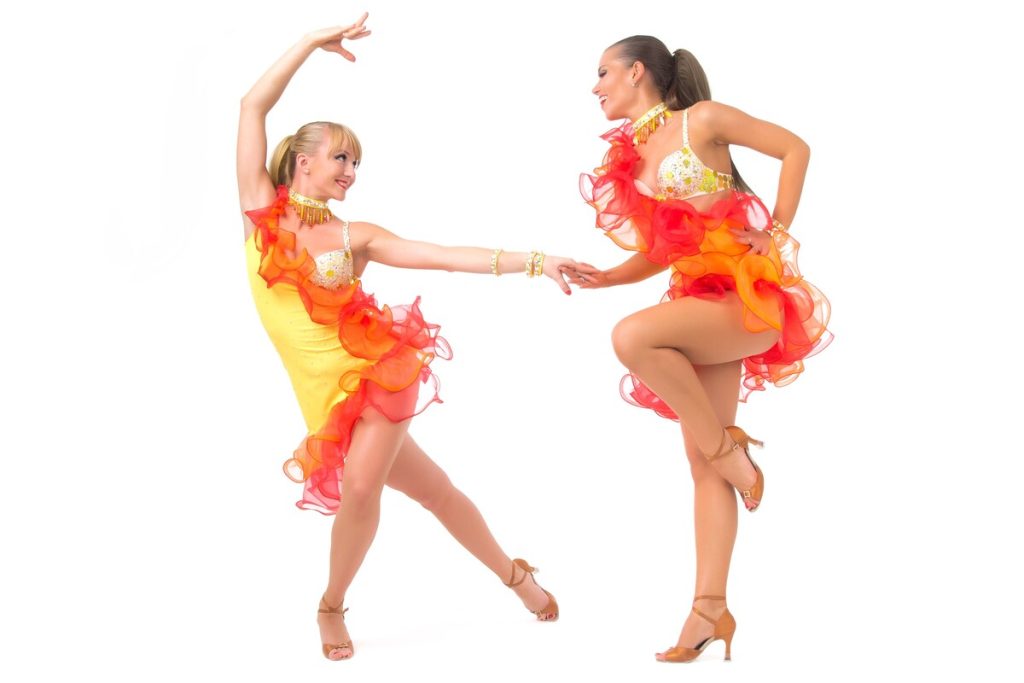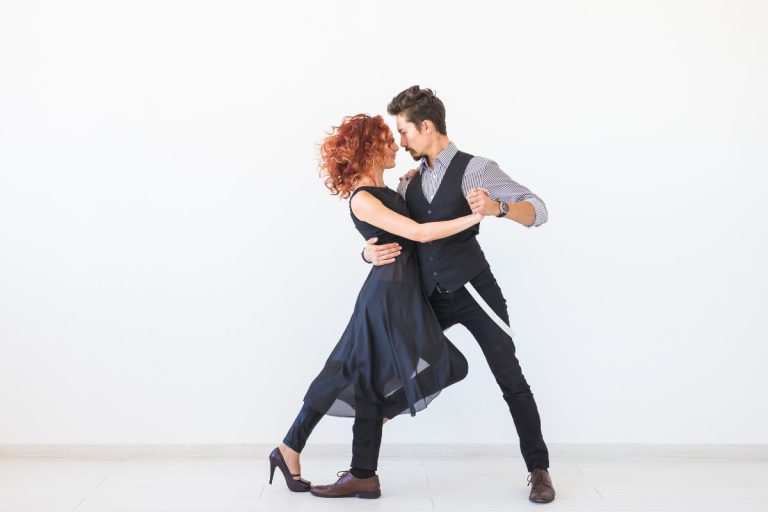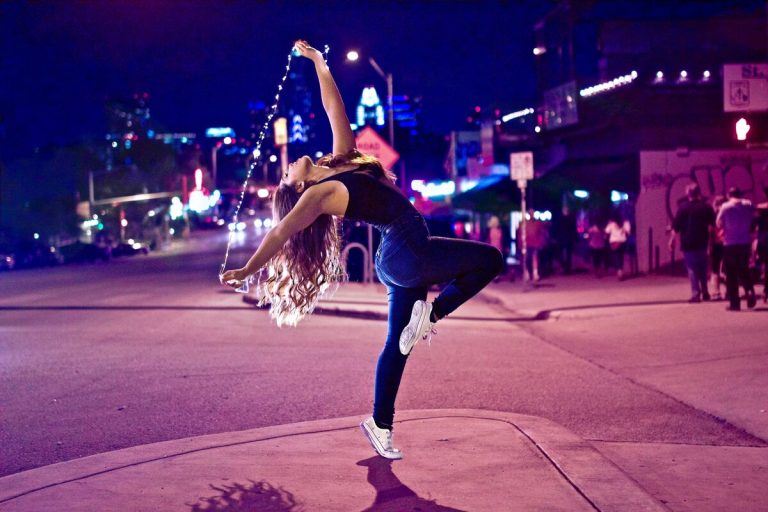The Dominican Republic’s traditional dance and music, known as “merengue,” has its roots in the nation’s rural interior and outlying areas. It is a vibrant, quick-paced dance frequently performed to upbeat, energetic music. The dance has gained popularity worldwide and is thought to have started in the early 1800s.
The male leads, and the woman follows as a pair generally dance the dance. Typically, the woman follows with her right hand while the guy leads with his left. Frequently, the couple dances together, their hips touching.
Anyone with a rudimentary understanding of dancing may learn merengue because it is a relatively simple dance. When dancing merengue, the most crucial thing to remember is to enjoy yourself and the music.
The Initial Steps
There are many various styles of dance to select from, making it a fantastic way to exercise and have fun. The merengue is one style of dance you can learn if you’re interested. This well-known Latin dance can be a lot of fun and is simple to master. Here are some pointers to get you going.
It would be best to start by looking for a reputable dance class. You should be able to choose a perfect category because so many different types are offered. Finding a course is the first step; learning the fundamentals comes next.
Three steps make up the majority of merengue dances. The left foot is used to take the first step, followed by the right foot and the left foot once more. Then you proceed to do this pattern again, switching feet each time.
You can begin incorporating some of the more complex maneuvers after you’ve mastered the fundamental ones. There are several of these, so you’ll have to try them all to choose which one you enjoy the most. Remember to enjoy yourself and don’t be afraid to mess up.
The Crossbody Lead
The cross-body lead is one of the most essential and significant maneuvers in merengue dancing. This basic technique is the foundation for many subsequent, trickier movements. There are various methods to perform the cross-body lead, but the most crucial thing is to keep your body close to your partner while leading with your hips.
The following advice is for performing the Cross Body Lead:
- Stand upright and put all your weight on your left foot.
- Move your body to the left, stepping forward with your right foot so that your right shoulder is in front of your left shoulder.
- Place your right hand on your left hip and your left hand on your right shoulder.
- Step forward with your left foot while moving your hips to the right, twisting your body so your left shoulder is in front of your right shoulder.
- Place your left hand on your right hip and your right hand on your left shoulder.
- Continue carrying out steps 4 and 5 until you have arrived at your target location.
The cross-body lead is an excellent technique for beginners because it is relatively simple and can be done in various ways. You can try several variations once you have mastered the fundamental Cross Body Lead.
The Side Step
The side step is typical in many Latin dances, including the merengue. It’s an easy move that can be performed stationary or around the dance floor.
The following advice will help you make the most of your side steps.
- Stand upright with your feet together and evenly distribute weight.
- Quickly bring your right foot to meet your left foot as you step to the side with your left foot.
- Re-do the motion, but this time put your right foot first.
- As you become more accustomed to the side step, you can spice it up by swinging your hips as you take each step.
- Using the side step, You can change directions while moving around the dance floor. Take action with your left foot off to the side, then pivot with your right foot to turn in the desired direction.
You can incorporate the side step into your repertoire of Latin dance moves after some practice makes it second nature.
The Back Step
An essential move in the merengue dance is the back step. It is frequently used as a turning step and is danced to the first and fifth beats of the music.
To dance the back step, step back with your left foot first, then bring your right foot back to meet it. When the feet come together, they ought to be closely spaced. The right foot advances to meet the left foot as it steps backward on the following beat.
One can dance the back step alone, in a circle, or even in a line. It is a fluid move that can cross the dance floor or switch lanes.
Keep your entire weight over your feet and utilize your hips to set the pace when dancing the back step. Doing this lets you maintain your balance and keep your feet close together.
The Turn
The turn is one of the most significant and recognizable techniques in merengue dancing. When executed correctly, it looks stunning and brings the dance to life.
Here are six suggestions for honing your turn and making it appear effortless.
- Stand upright and put all your weight on your left foot.
- Move your right foot behind your left while turning your body to the right.
- Shift your weight to your right foot as you turn.
- Put your left foot before your right to complete the turn.
- Put your weight back on your left foot to finish the turn, then return your right foot to its starting position.
- Make the opposite turn once again.
You should initially try these methods gently to get the feel of them. The turn can then be accelerated and made more dynamic. Remember to lead with your hips and move smoothly and fluidly. You’ll soon be turning into a pro with a bit of practice.
The Scissors
The scissors are one of the most crucial dancing moves, as anyone who enjoys merengue would attest. The scissors is a dance technique in which you quickly and choppily cross your legs back and forth. It can get the party going on the dance floor!
Check out these seven pointers whether you’re new to the merengue or want to brush up on your scissors technique. You’ll be dancing like a pro in no time.
- Stand with your feet together and equally distribute your weight between the two.
- Cross your left leg across your right leg by raising your left leg.
- Start shifting your weight onto your left foot as you cross your left leg over your right.
- Straighten your legs quickly, then cross your right leg over your left. Put your weight on your right foot as you cross your right leg.
- Continue crossing your legs in this manner, first crossing your right leg over your left and then your left leg over your right.
- As you become more at ease with the motion, strive to quicken the scissors.
- Add a slight hip motion to your scissors to liven them up. Twist your hips to the left as you cross your legs, then to the right as you uncross them.

The Hip Twist,
A foundational step in merengue dance is the hip twist. Dancers should begin with their feet together and take significant action to the side with their right foot to do the hip twist. After that, the left foot should move behind the right foot. Dancers should rotate their hips first to the right, then to the left, starting from this stance. Afterward, they should put their feet together and return to the beginning position.
Numerous techniques can be used to perform the hip twist. Dancers can, for instance, rotate their hips while keeping their feet together or stepping to the side. The merengue primary or cross-body lead can also be paired with the hip twist.
When done correctly, the hip twist is a sweet and seductive technique that will make you stand out on the dance floor. Therefore, give the hip twist a shot to spice up your merengue dancing.
The Convergence
The Dominican Republic is where merengue, a dance form, first appeared. It is an energetic, quick-paced dance that is performed to upbeat music. The merengue is a standard dance form seen at weddings, bars, and other social occasions.
The fundamental merengue step is a side-to-side motion akin to walking. The knees should be slightly bent, and the feet should remain flat on the ground. Additionally, the hips must stay level and immobile from side to side. Your weight should be distributed from one foot to the other when you take the fundamental step.
You can attempt some of the following dance steps to spice up your merengue dancing:
The Connection:
Start with your feet together and the weight on your left foot to perform the crossover. Cross your left foot in front of your right and advance with your right foot. Cross your left foot behind your right and step to the side with your right foot. Cross your left foot before your request and dance to the side with your right foot. Finally, take a forward stride with your right foot while crossing your left leg over your right.
Crossover the Double:
Start with your feet together and the weight on your left foot to perform the double crossover. Cross your left foot in front of your right and advance with your right foot. Cross your left foot behind your right and step to the side with your right foot. Cross your left foot before your request and dance to the side with your right foot. Cross your left foot in front of your right and advance with your right foot. After that, cross your left foot behind your request and stride to the side with your right foot.
In summary
The Dominican Republic is where merengue, a dance form, first appeared. It’s a vibrant, seductive dance frequently seen at weddings and other events. Although the primary step is straightforward, different variants can be added to make the dance more challenging.
There are some things to remember if you wish to learn how to dance merengue.
- To perform the fundamental step, step forward with your left foot first, then lift your right foot to meet it.
- Throughout the dance, the feet should remain closely spaced.
- The hips shouldn’t wobble from side to side and should remain level.
- The hands should remain in fists, and the arms at the sides.
- The dancer should maintain an upright posture and fix their gaze on the spot before them.
- The dance should be performed at a brisk, steady pace.
When you have the fundamental step down, you may incorporate some of the numerous variations.
The most well-liked versions include:
- The double step is performed by first taking two phases with the left foot forward and then two steps with the right foot backward.
- The cross step involves advancing with the left foot, then crossing the right foot in front of the left.
- The side step: To perform this, step with the left foot to the side and then bring the right foot to meet it.
- The back step entails taking a left foot step back and then bringing the right foot to meet it.
- The turn: The body is turned to the left or right, and a step is subsequently taken in that direction.
You can start experimenting with your steps and developing your distinctive merengue style once you have mastered the fundamental measure and some of the more well-liked variations.







